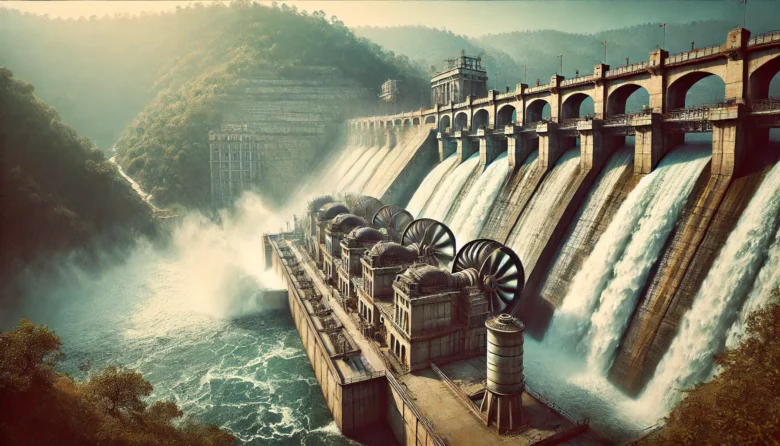Hello everyone! Today, we’re diving into an exciting topic that’s both scientifically fascinating and incredibly relevant to our lives: the science behind renewable energy technologies. As we move towards a more sustainable future, understanding how these technologies work can help us appreciate their impact and potential. So, let’s explore the world of renewable energy together!
Introduction
Renewable energy is rapidly becoming a key player in India’s energy landscape. With increasing concerns about climate change and pollution, there is a significant move towards embracing cleaner energy sources. The science behind renewable energy technologies is both innovative and transformative, providing solutions that help reduce our carbon footprint and promote sustainability. In this blog, we’ll delve into the principles behind these technologies and see how they are making a difference in our daily lives.
Solar Energy: Capturing Sunlight
Solar energy is among the most prevalent renewable energy sources in India. It works on the principle of converting sunlight into electricity using photovoltaic (PV) cells. These cells are made of semiconductor materials, usually silicon, which generate electricity when exposed to sunlight.
When sunlight strikes the PV cells, it dislodges electrons from their atoms, creating an electric current. This process is known as the photovoltaic effect. The electricity generated can be used to power homes, businesses, and even entire communities. Solar panels, which are collections of PV cells, are now a common sight on rooftops across India, providing clean and affordable energy.
Wind Energy: Utilizing Wind Power
Wind energy is another crucial renewable energy source. Wind turbines transform the kinetic energy from the wind into mechanical power, which can then be converted into electricity. The science behind wind energy involves the principles of aerodynamics and mechanical engineering.
When wind blows across the blades of a wind turbine, it creates lift and drag forces. The lift force, which is stronger than the drag, causes the blades to spin. This spinning turns a shaft connected to a generator, producing electricity. Wind farms, which consist of multiple wind turbines, are increasingly being established in windy regions of India, such as Gujarat and Tamil Nadu.

Hydroelectric Power: Utilizing Water Flow
Hydroelectric power, or hydropower, harnesses the energy of flowing water to generate electricity. This technology relies on the principles of fluid dynamics and gravitational potential energy. The basic setup involves a dam built on a river, creating a reservoir of water.
When water is released from the reservoir, it flows through turbines, causing them to spin. This mechanical power is subsequently converted into electricity by a generator. Hydropower is a well-established renewable energy source in India, with major projects like the Tehri Dam in Uttarakhand providing substantial amounts of clean energy.
Biomass Energy: Converting Organic Matter
Biomass energy is obtained from organic materials like plant and animal waste. The science behind biomass energy involves biological and chemical processes that convert these materials into usable energy forms like heat, electricity, and biofuels.
A common method involves combustion, where biomass is burned to produce heat, which is then used to generate electricity. Another approach is anaerobic digestion, where microorganisms decompose organic matter without oxygen, creating biogas that can be used for heating and electricity generation. Biomass energy is particularly useful in rural areas of India, where agricultural waste can be converted into valuable energy.
Geothermal Energy: Accessing Earth’s Heat
Geothermal energy utilizes the heat stored beneath the Earth’s surface to generate electricity and provide heating. This technology is based on the principles of geology and thermodynamics. Geothermal plants are typically located in regions with high geothermal activity, such as volcanic areas.
The process involves drilling wells to access hot water and steam reservoirs underground. This steam is then used to drive turbines connected to generators, producing electricity. While geothermal energy is still emerging in India, it holds great potential, especially in areas like the Himalayas, which have significant geothermal resources.
Ocean Energy: Exploiting Tides and Waves
Ocean energy includes both tidal and wave energy, which utilize the movement of seawater to generate electricity. The science behind ocean energy involves the principles of marine hydrodynamics and mechanical engineering.
Tidal energy captures the gravitational pull of the moon and the sun, causing sea levels to rise and fall. Tidal turbines, similar to underwater wind turbines, are placed in tidal streams to capture this energy. Wave energy, on the other hand, uses the kinetic energy of surface waves. Devices like oscillating water columns and point absorbers convert wave motion into electricity. India, with its long coastline, has significant potential for developing ocean energy technologies.
The Role of Government and Industry
The Indian government and private sector play a crucial role in promoting renewable energy technologies. Initiatives like the National Solar Mission aim to increase the adoption of solar energy, while companies like Tata Power Solar (a leading solar power company in India) are driving innovation and investment in renewable energy.
Government policies, subsidies, and incentives are essential for encouraging the adoption of renewable technologies. For example, the Indian government provides various schemes to encourage the installation of solar panels, wind turbines, and other renewable energy systems.
Challenges and Future Prospects
While renewable energy technologies offer immense benefits, there are challenges to their widespread adoption. High initial costs, technological limitations, and the need for reliable energy storage solutions are some of the hurdles. However, continuous research and development, along with supportive policies, can address these challenges.
The future of renewable energy in India appears bright. With technological advancements and growing awareness about sustainability, renewable energy sources are expected to become a major part of India’s energy mix. By adopting these technologies, we can lessen our reliance on fossil fuels and move towards a cleaner and greener future.
Conclusion
Understanding the science behind renewable energy technologies helps us appreciate their potential and importance. These technologies offer sustainable solutions to our energy needs, from solar and wind power to hydropower and biomass energy. As we continue to develop and invest in renewable energy, we can create a brighter and more sustainable future for India and the world.
Author’s Note
Thank you for reading! I hope this blog has given you a better understanding of the science behind renewable energy technologies. Let’s continue to support and adopt these innovations to ensure a healthier and greener planet.
G.C., Ecosociosphere contributor.





Comments
The degree of my admiration for your work is as substantial as your own sentiment. Your visual display is tasteful, and the authored content is stylish. However, you appear apprehensive about the possibility of delivering something that may be viewed as questionable. I believe you’ll be able to rectify this matter efficiently.
Hello just wanted to give you a brief heads up and let you know a few of the images aren’t loading correctly. I’m not sure why but I think its a linking issue. I’ve tried it in two different internet browsers and both show the same results.
Definitely, what a splendid site and illuminating posts, I will bookmark your website.Best Regards!
Hi there, You have done a fantastic job. I抣l definitely digg it and personally recommend to my friends. I’m confident they’ll be benefited from this web site.
Write more, thats all I have to say. Literally, it seems as though you relied on the video to make your point. You definitely know what youre talking about, why waste your intelligence on just posting videos to your weblog when you could be giving us something informative to read?
Right here is the perfect blog for everyone who hopes to find out about this topic. http://www.hairstylesvip.com You understand so much its almost hard to argue with you (not that I actually will need to…HaHa). You definitely put a freshspin on a topic that has been written about for decades.Excellent stuff, just great!
Terrific work! That is the kind of information that are supposed to be shared around the internet. Shame on Google for now not positioning this post higher! Come on over and consult with my site . Thanks =)